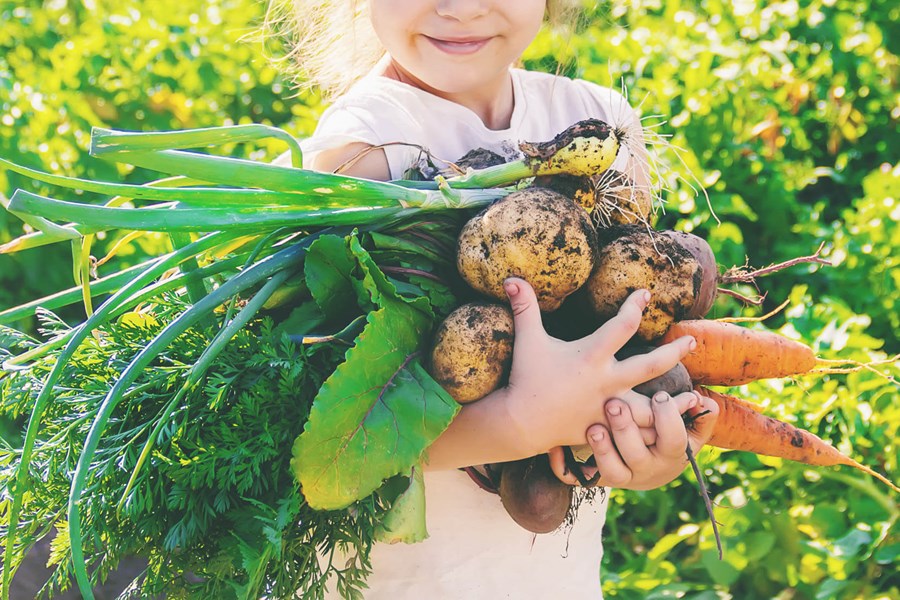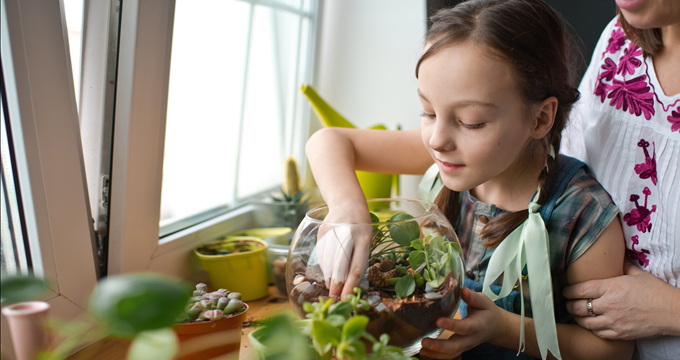There’s no doubt that fresh fruit and veggies are essential part of good health. After all, fresh fruit and veggies come packed with vitamins, minerals, and phytochemicals. Or do they? Turns out it might depend on how you treat and cook them. For example, does microwaving really zap vitamins and minerals? Is it better to buy fresh instead of frozen? And is your body able to absorb all the good-for-you nutrition, anyway?
Here are some surprising answers to your nutrition questions – and a few simple steps to help you get the most from your fresh produce-packed meals.
Fresh vs. frozen
Q. I've always thought fresh is best when it comes to fruit and vegetables, but now my daughter tells me frozen foods have more nutrients. Who's right?
A. You're both right. It's true that fresh fruit and vegetables tend to taste better and have more nutritional value than frozen or canned. But not always!
Fresh is best when it really is farm-fresh and ripe. BUT many commercial fruits and veggies are picked before peak ripeness – which also means before their nutritional peak – to avoid spoilage during transport and storage. It only takes just a few days after harvest for fruits and vegetables to start losing some of their nutritive goodness. What's more, the longer they sit on the shelf (during transport, in the supermarket, and in your fridge) the fewer nutrients they have left to pass on to you.
On the other hand, vegetables and fruit intended for freezing are usually picked closer to the peak of ripeness and are flash-frozen immediately after harvest. And while this process does deplete some nutrients, it locks in the rest for up to 12 months. So in some instances, frozen fruit and veggies may actually have more of the vitamins and minerals your body needs.
Top Tip! To help retain the highest levels of vitamin C, don't thaw frozen veggies before cooking. Studies show that vegetables cooked directly from frozen retain more vitamin C than vegetables that are thawed first.
For nutrient-rich fresh fruit and veggies, buy what's in season and grown locally. And eat it within a few days of purchase. Find your local farmers market at http://www.farmersmarkets.org.nz/.
Made with the microwave
Q. Does microwaving really zap all the vitamins and minerals from vegetables? If so, what's the best way to cook them?
A. Good question! But the jury's still out on this one. That’s because some studies suggest the microwave is to blame for sucking nutrients out of food, and others point a finger at the water in which they are cooked.
For most vegetables and fruit, any type of cooking lowers the nutrient content. So for now, a good rule of thumb is: Less is more. That means leaving the skin on whenever possible, washing well before cooking/eating, and lightly steaming vegetables instead of boiling, sautéing, or roasting. Better yet, go raw with a fresh salad!
The exception here is the red tomato. Cooking at heat for a long period of time actually increases its level of lycopene (see next question) an antioxidant thought to help prevent certain types of cancer, heart disease, and vision loss.
Top Tip! Drizzle your veggies with a bit of olive oil to help your body better absorb the vitamins and minerals.
Love that lycopene
Q. I don't like tomatoes, but I've heard they’re a good source of the antioxidant lycopene. Are there any other fruits or vegetables that contain lycopene?
A. You're in luck. Tomatoes and tomato products may be the main dietary source of lycopene for most people, but you can top off your lyco levels with other fruits, including papaya, guava, watermelon, and pink grapefruit. It’s actually the Lycopene that gives those fruits their colour. In people, it can be a powerful antioxidant.
Tomatoes, for example, have relatively low levels of the antioxidant until they're cooked, which increases the amount of lycopene (adding a little olive oil makes it easier for the body to absorb this healthful substance too). Even cooked and processed tomato products, like Bolognese sauce and tomato soup can be excellent sources of lycopene. Just stick with low-sodium, low-sugar varieties of prepared tomato products though.
Top Tip! Pair fresh fruit like papaya, guava, watermelon, and pink grapefruit with low-fat (rather than non-fat) yoghurt or cottage cheese to help your body better absorb the lycopene.
The good fats
Q. I always use fat-free salad dressing to ensure I'm not loading up on extra kilojoules. But I recently heard that full-fat salad dressing is best. Is that true?
A. It may seem counterintuitive, but it's true. Salad dressing with some fat is best if you're after the antioxidants in the salad.
That's because some antioxidants, such as carotenoids found in carrots, tomatoes, spinach, and corn, need fat in order to be absorbed by your body. In one study, participants who added full-fat dressing to their salads absorbed more carotenoids than participants who used low-fat, fat-free, or no dressing.
This doesn't mean you should drench your veggies in high-fat, high-kilojoule dressings though! Just pair your fresh salads with a little bit of healthy fat. Choose salad dressings with exclusively heart-healthy monounsaturated fats. Ones with a base of olive oil or even avocado are best, or just make one of your own.
Beyond fruit and veg
Q. I love fresh salad with olive oil dressing. But do I have to get all my antioxidants from fruit and veggies?
A. Nope. Dark chocolate, red wine, and nuts also offer antioxidant-like substances. They just aren't as low-kilojoule or as good for you. So consider them nice little once-in-a-while treats.
Tea and spices, on the other hand, are good sources of antioxidants and you can load these up to your heart's content.
Top Tip! If you're looking to get the antioxidant health benefits from dark chocolate (yes, it contains heart-healthy flavanols), don't mix it with milk. A study suggests that milk may interfere with the body's ability to absorb flavanols.
Last Reviewed: August 2020
Sources:
Brown MJ, Ferruzzi MG, Nguyen ML, et al. Carotenoid bioavailability is higher from salads ingested with full-fat than with fat-reduced salad dressings as measured with electrochemical detection. Am J Clin Nutr. 2004;80(2):396-403. doi:10.1093/ajcn/80.2.396
Nursal B, Yücecan S. Vitamin C losses in some frozen vegetables due to various cooking methods. Nahrung. 2000;44(6):451-453. doi:10.1002/1521-3803(20001201)44:6<451::AID-FOOD451>3.0.CO;2-5
Serafini, M., Bugianesi, R., Maiani, G. et al. Plasma antioxidants from chocolate. Nature 424, 1013 (2003). https://doi.org/10.1038/4241013a




